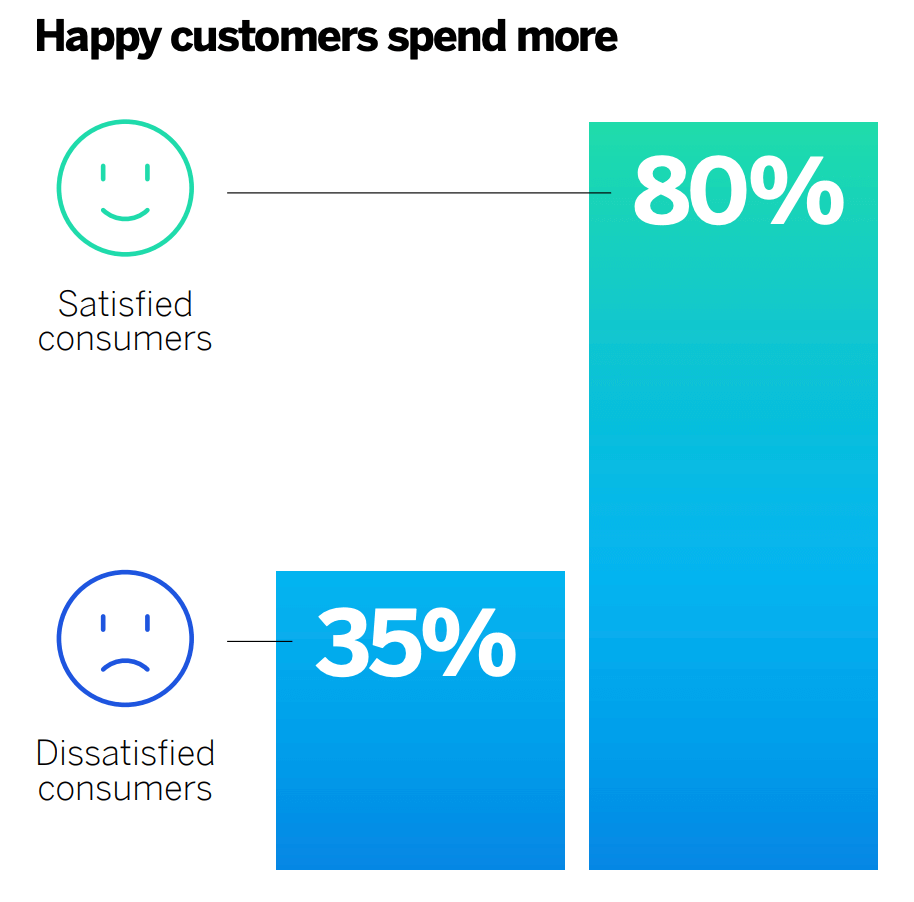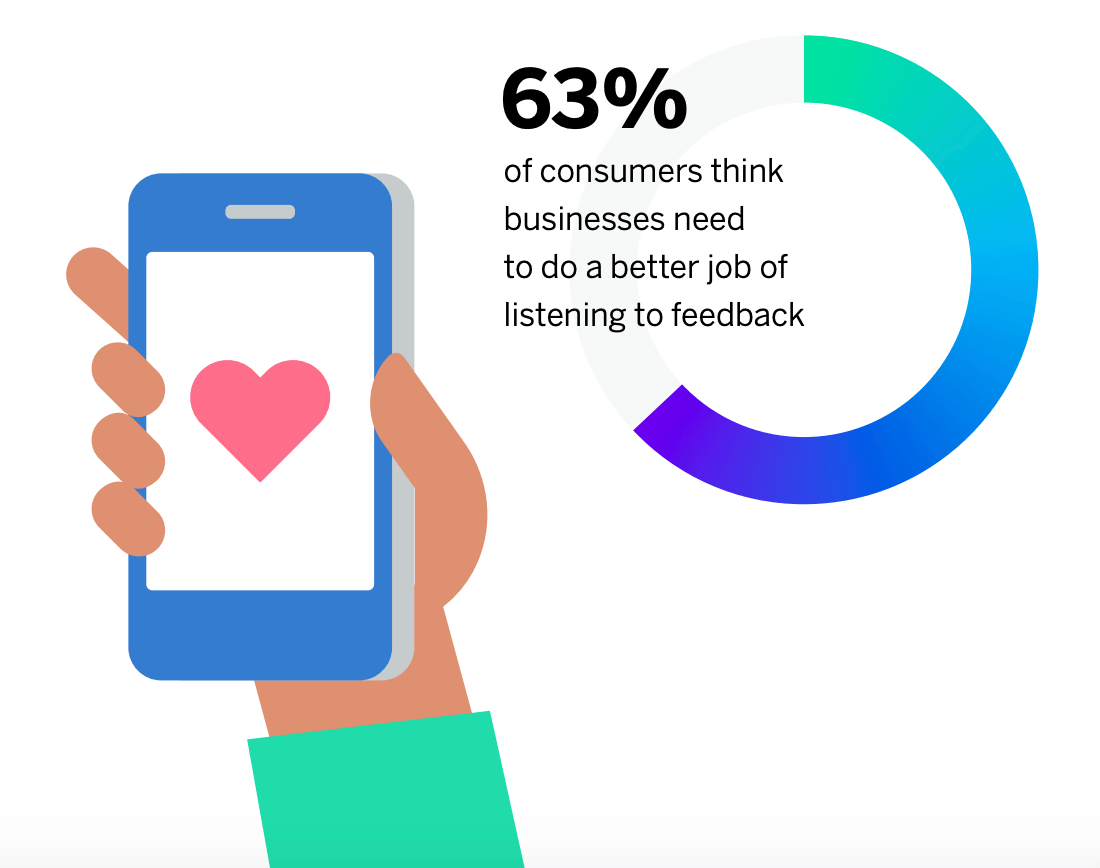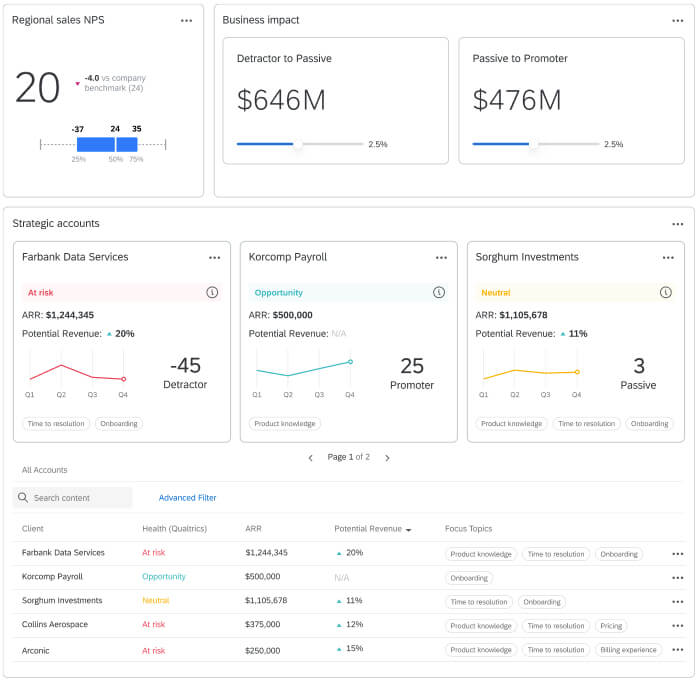What are customer relationships in businesses?
Customer relationships are the backbone of a successful business. They’re the connection between your brand and your customers, encompassing all the history of interactions between both parties and the foundation for future transactions. Those past interactions often dictate the likelihood of future ones too.
In times of market and economic turbulence, building and maintaining good customer relationships is vital. It becomes harder to attract new customers, so attention moves to keeping the ones you have. Buyer expectations are higher than ever, meaning your brand needs to work harder to develop customer loyalty.
Free eBook: 2023 consumer trends report
Strong customer relationships
Good customer relationships often feature a two-way approach to communication, with high customer satisfaction. Interactions not only meet customer expectations, but exceed them, resulting in loyal customers who return time and time again to purchase more. You provide a consistent customer experience, and your audience’s lifetime value improves as a result. They’re excited to buy your products and services because they feel appreciated and their voice heard.
Weak customer relationships
Weak customer relationships are fleeting, with low customer retention rates. Customer requests often go ignored, and those interacting with your brand feel as though they’re just another number. They don’t feel as if their voice is listened to, or feel any particularly strong affinity to the brand. When competitors offer similar products or services, they’re likely to switch in search of something better.
Why are customer relationships so important?
Customer relationships are fundamental to the success of a business. The more you invest in your customers and their relationships with your brand, the more likely it is that you’ll get a return on investment in several areas of your business.
For example, by investing in your customer relationships, you might experience:
Improved customer loyalty
Strong customer relationships lead to loyal customers, who return to your brand over others to make purchases. To build customer relationships that are loyal takes time and multiple experiences, however – it takes more than just an initial purchase to see the true value of the interaction.
Customers that rate an experience 5/5 stars are more than twice as likely to purchase from that company than those who rated it 1 or 2 stars.

Source: Qualtrics Consumer Trends 2023
By investing in customer experiences you build better customer relationships and you’re able to convert your audience into a loyal and lasting following more quickly. Each experience they have with your brand should convince them that your brand is worth returning to. Whether you’ve offered excellent customer service, created a great loyalty program, or successfully made a personal connection, customers who feel they have a trustworthy relationship with you will become loyal.
Reduced customer churn
Customers who have consistent experiences in their relationship with brands are more likely to stay. As McKinsey has found, consistency is key – customers come to know what to expect and react accordingly. When you have strong relationships with your audience, they know that you’ll provide a great experience every time they come to you.
Higher customer lifetime value (CLV)
When customers are loyal and come back for the personal connection you’ve built with them, they increase their customer lifetime value. Each time they return to purchase again, they’re giving you more value and costing you less.
With good customer relationships, you don’t need to spend valuable funding on searching for new customers, because your existing customer base continually spends with you.
Lower customer acquisition costs
When deciding where to spend your budget for maximum ROI, it makes sense to invest in relationships that grow your business. You have a 60 to 70% chance of selling to an existing customer – in contrast, selling to a new potential lead is as low as 5% – 20%.
Not only that, but bringing in a new customer can cost five times as much as retaining your existing one. Save yourself the cost of outreach – your audience experiencing high levels of customer satisfaction are more likely to recommend you to others, bringing in new customers for you.
8 steps to better customer relationship management
No matter if you’re a small business or an international conglomerate, your relationships with customers will likely define your success. To help you in building customer relationships that last, we’ve listed our eight steps to better customer relationships and more effective customer relationship management.
Engage in active listening across all communication channels – and then act on what you find
Our research found that 63% of consumers believe companies need to listen more to their feedback.

Customers who take the time to feedback on their experiences are seeking a mutually beneficial relationship between themselves and your brand. They’re telling you what they want, giving you valuable data for you to use in future interactions to further build customer relationships.
However, if you don’t show appreciation for customer feedback, respond to their effort or demonstrate that customer feedback is taken on board, they’ll soon lose interest. A strong relationship can take constructive criticism – and after all, your customers are the ones you want to impress.
Try:
- Informing your audience when you’ve listened to their feedback helps to build a two way customer relationship that’s seen to be mutual
- Ensure you thank customers who take time to give feedback, and incentivise others to give their views to ensure you get the bigger picture
Get deeper insights into customer behaviour
It’s not just about what customers are saying – it’s about what they’re implying, as well. Using techniques such as natural language understanding (NLU) can help you to get a deeper view of your customer interactions and the emotion, effort, intent and sentiment that drives customer relations. Customer behaviour can be analysed on an in-depth level, helping you to not understand what they’re doing, but why, and predicting future behaviour more easily.
You can try:
- Using customer surveys to get their feedback immediately after a step in the customer journey. For example, you might get a Customer Effort Score (CES) through a post-transaction survey and understand why that interaction has become a customer pain point
- Evaluating both structured data (such as survey scores) and unstructured data (such open text responses in a customer service chat) to understand customer behaviour. This gives you a more comprehensive view
Use data to guide how you build customer relationships
Your best customers are the ones that spend the most with your company on a regular basis. Ideally, you want to replicate these customers by finding others like them and bringing them into the fold and building customer relationships with them.
Every interaction with your customers provides you with a wealth of data when you have the right tools to discover it, such as a customer relationships management (CRM) system. From customer data and operational data right down to passing mentions in customer service chats, you can surface insights into your customer loyalty champions and understand how to cultivate more like them.
We suggest:
- Using technology to automatically find and deliver insights to relevant team members in real time to fix broken experiences
- Ensuring your data is kept centralised to avoid important customer information being kept in silos, preventing you from building customer relationships that are informed with context
Create an emotional, human connection
How your customers feel about you can greatly affect the relationships you build with them. In our research, 6.2% of consumers we surveyed said helpful agents made them happy in their contact centre experience, and 5.2% said agent empathy made a difference. In contrast, only 2.7% valued low wait times.
Showing empathy and creating a personal connection takes time, but it can be fostered with personalised experiences that offer great customer satisfaction.
Try:
- Getting on a personal level with customers by offering them ways to contact you that they prefer, such as SMS or social media chat, or creating an online community where customers can regularly interact with your brand
- Giving them personalised offers and recommendations so that they feel seen as an individual, using data as your guide
Make every interaction personal

When you personalise relationships with your customers, they feel more connected to you and your company’s products. It also shows that you care about them personally, which can yield financial results. For example, we found that 62% of consumers think that brands need to care more about them – and 60% of them would buy more if they felt cared for.
Develop trust
Trust comes from customer expectations being met in the same approved way, time and time again. Providing a consistent experience is vital for customers to know what to expect and begin to trust your brand. Trust is important for customer relations – over 80% of consumers see trust as a deciding factor in their purchase decisions, even though only 34% have trust in the brands they buy from.
We suggest that you:
- Understand the expectations of your target audience. Take customer service expectations, for example – do they expect short wait times, or agents to know the history of their brand interactions?
- Gauge trust through surveys, such as Net Promoter Scores (NPS), which can tell you if you’re trusted enough to recommend to others
Reward loyalty
Loyal customers love your company’s products or services – and they want to feel rewarded for their dedication. Long-lasting customer relationships are built with a give-and-take approach, where your brand demonstrates that loyalty is rewarded.
You can try:
- Creating a loyalty program with rewards for multiple purchases and repeat custom
- Offering early access, a discount or other incentive for returning to buy again from your brand
Provide customer experiences that resonate
In the end, it might not even be your products or services that bring customers back – it’s the customer experiences you offer that will tempt buyers to return. As we’ve found, customers who rate an experience 5/5 stars are more than twice as likely to buy again, and 80% of satisfied consumers spend more. To build customer relationships that last, you’ll need to create experiences that resonate.
We suggest:
- Using data to track your customer journey and see which interactions are leading to a less desirable experience
- Surface insights about customer experience with regular CSAT and other surveys to gauge customer behaviour over time
Build good customer relationships that last with Qualtrics
By listening, understanding and caring about each of your customers, you can start building strong customer relationships and develop long-lasting revenue for your business.
Qualtrics CustomerXM™ allows you to explore customer relationship management in a way like no other. Hear every comment, respond to every issue in real time and convert data into valuable insights with our ultimate listening engine equipped with predictive intelligence and powerful analytics. Get a holistic understanding of what your customer expect, and take effective action for more meaningful customer interactions and strong customer relationships.

With Qualtrics CustomerXM, you’re able to deliver human experiences that align with customer needs, wants and expectations, every time.
Free eBook: 2023 consumer trends report